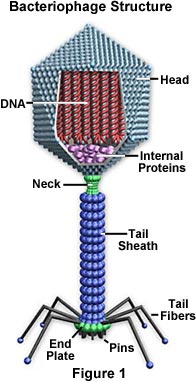Feb. 27, 2003. 07:07 AM
VITTORIO LUZZATI/NEW YORK TIMES
Chemist Dr.Rosalind Franklin was not credited for her role in the discovery of the molecular structure of DNA. She took the X-ray photograph that helped Watson and Crick determine the molecule's winding double helix shape. Franklin died in 1958 and the Nobel Prize is not awarded posthumously.
50th anniversary for 'secret of life'
DNA structure found by Watson, Crick
MICHAEL STROH
SPECIAL TO THE STARAbout noon on Feb. 28, 1953, two men burst into their favourite pub, a scruffy spot called The Eagle near their Cambridge University laboratory. As people sipped their beers and forked down shepherd's pie, one of the men announced: "We have discovered the secret of life.''
The scene — which played out 50 years ago this week — is one of the most famous of 20th-century science. It marked the conclusion to an intellectual footrace to find the structure of deoxyribonucleic acid, better known as DNA.
Playing with a crude cardboard model of the DNA molecule, Francis Crick, a 36-year-old Englishman, and his 24-year-old American partner, James Watson, had puzzled out DNA's now-familiar double helix early that day. Their discovery solved the fundamental mystery of heredity. A half-century later, historians are still filling in the details of the story behind the discovery and discussing who should get credit.
In her recent biography, Rosalind Franklin: The Dark Lady of DNA,author Brenda Maddox shows how the secretly acquired photographs and molecular measurements of DNA by little-known chemist Rosalind Franklin led Watson and Crick to a Nobel Prize.
James Dewey Watson and Francis Harry Compton Crick met in October 1951. Born in Northampton, England, Crick was known for his nonstop talking and stiletto-sharp intellect. Watson, meanwhile, was an eccentric skirt-chaser from Chicago who graduated from the University of Chicago with a degree in zoology at 19.
Both altered their careers after stumbling upon physicist Erwin Schrodinger's book What is Life? which argued that genes were the essential stuff of life.
The book inspired Crick, at the relatively late age of 33, to abandon physics for biology and pursue a doctorate at Cambridge. Watson, too, had become obsessed with DNA after reading Schrodinger and went to Cambridge with hopes of unlocking the molecule's secrets.
Although the two were officially assigned to other things, unofficially they spent most of their time talking about DNA over tea in Room 103 of the Cavendish Laboratory or over lunch at The Eagle.
Discovered in 1869, DNA was considered only a bit player in genetics. Scientists thought proteins, which perform most essential tasks in the body, were most likely to be responsible for passing on hereditary traits. DNA appeared to be too simple a molecule to do that.
Among the handful of scientists interested in DNA was Linus Pauling at the California Institute of Technology, a chemist who went on to win two Nobel Prizes. He had an unorthodox approach to solving problems: He liked to build Tinkertoy-like models of molecules, rearranging the pieces until they fit.
Just before Watson arrived at Cambridge, the 50-year-old Pauling had used his toys to pull off a scientific coup, discovering that certain proteins had a corkscrew — or helix — shape.
Some scientists were speculating that DNA also might be helix-shaped. Watson, who saw DNA as the "most golden of all molecules," worried that Pauling might try to find out.
In fact, in the fall of 1951, Watson and Crick knew that Pauling was sniffing around for good photographs of DNA.
The place to which Pauling — and soon Watson and Crick — would turn for photos was King's College in London, where Maurice Wilkins and Franklin were taking the world's finest portraits of DNA using a technique called X-ray crystallography.
The photos produced from the crystallography, however, were extraordinarily hard to interpret. DNA showed up as a fuzzy, cross-shaped blob.
In November 1951, Wilkins invited Watson to London to hear Franklin speak at a seminar. Hoping she would show her DNA photos, Watson eagerly accepted.
Today, even schoolchildren know the answers that Watson and Crick were groping for then. DNA looks like a spiral staircase: a twisted double strand of sugar and phosphate molecules forms the outer rails, while a series of four molecular "bases" — adenine, cytosine, thymine and guanine — serve as stairs. But the wasn't clear from the few ghostly images available then.
When Watson returned to Cambridge, he and Crick started to build a model based on his sketchy recollection of Franklin's talk.
The pair invited Wilkins and Franklin to see the model. It was all wrong, Franklin said, pointing out several errors of basic chemistry, a subject which the Cambridge scientists acknowledged was not their best.
In May 1952, Franklin took an X-ray photo of DNA she labelled Photograph 51. To the untrained eye it looks only slightly less blurry than her other shots. But it would turn out to be key to Watson and Crick's success.
Watson's fears about Pauling came true around Christmas 1952, when he heard that the Caltech scientist had figured out DNA's structure and would soon publish his solution. Watson and Crick were devastated — until they got hold of an early draft. Pauling's model of DNA was built of three strands. They felt it was wrong, just like theirs.
"We were still in the game," Watson later wrote.
On Jan. 28, 1953, Watson again travelled to London to hear Franklin give a seminar on her latest DNA X-ray results. Wilkins, who was barely on speaking terms with his partner Franklin by that time, quietly pulled Watson aside and showed him Photo 51. The photo led Watson to redraw the molecule with two corkscrew-like helical strands — a guess. A few days later, Watson and Crick secretly started building a new model based on that photo.
At a lunch meeting with Crick shortly thereafter, Wilkins let slip that Franklin had prepared a report on her latest measurements of the DNA molecule. Crick secretly obtained a copy of the report, and immediately concluded the DNA molecule was indeed made of two strands — a double helix that ran in opposite directions.
By Feb. 28, the pair had roughed out a cardboard model of the molecule, and a few days later, they wired together a rickety metal model eventually photographed by Time magazine.
Watson and Crick won a Nobel Prize in 1962, sharing it with Maurice Wilkins. But the scientist who took the photograph that led to Watson and Crick's breakthrough would not share the glory. Franklin died of ovarian cancer in April 1958. The Nobel committee does not award the prize posthumously.
BALTIMORE SUN
Taken from the Toronto Star Web Site:Toronto Star Web Site
Edited by Limitless, 27 February 2003 - 05:55 PM.























































